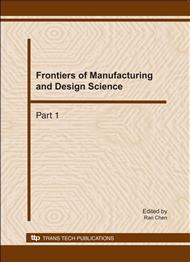p.3049
p.3053
p.3060
p.3067
p.3072
p.3077
p.3086
p.3092
p.3096
Polishing Mechanism and Technology of Hard Disk Substrates by Colloidal Silica Alkaline Slurry
Abstract:
Chemical mechanical polishing (CMP) has been a widely applied process for nickel-phosphorus (Ni-P) coating hard disk substrate polishing. In this study, colloidal silica-based alkaline slurry was prepared for polishing Ni-P plated substrates and its CMP mechanism was studied with alkali slurry. Effects of the various process parameters such as polishing pressure and plate speed on hard disk substrate were investigated. The results show that the polishing pressure and plate speed have a strong influence on the material removal rate and surface roughness of the hard disk substrate. The oxidization layer formed on hard disk substrate surface after polishing. The nickel ions were bounded with amidocyanogen to form stable and soluble macromolecular amidocyanogen-complex agent, improved selectivity of convex region and concave region, enhanced the chemical reaction uniformity and the mass transfer velocity, and thus high removal rate and low surface roughness could be realized.
Info:
Periodical:
Pages:
3072-3076
Citation:
Online since:
December 2010
Authors:
Price:
Сopyright:
© 2011 Trans Tech Publications Ltd. All Rights Reserved
Share:
Citation:


